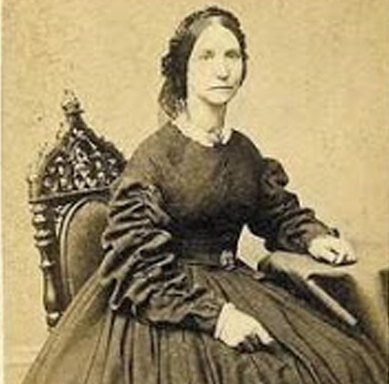When dancer/actress/choreographer Carol Haney (1924-1964) was a young child, a Portuguese fortune teller in New Bedford predicted her stardom. In a critically-acclaimed but short-lived career, Carol won a Tony Award and earned three Tony nominations for excellence on Broadway.
When dancer, actress and choreographer Carol Haney (1924-1964) was a young child, a Portuguese fortune teller in New Bedford predicted her stardom. In a critically-acclaimed but short-lived career, Carol won a Tony Award and earned three Tony nominations for excellence on Broadway. Her success on the stage extended to musical films as well.
Born in New Bedford to Norman and Iris Haney on December 24, 1924, Carol began to dance by age six, after the fortune teller told Iris that her oldest daughter would be a star. This prediction prompted her mother to enroll Carol in as many dance lessons as possible, building in her a foundation and love for dance. At age 15, while a student at New Bedford High School, Carol opened her own dance studio, “Miss Haney’s School of Dance.” A 1942 graduate of New Bedford High School, she performed often in student productions and became known there for her Mexican Hat Dance. Soon after graduation, Carol left New Bedford for Hollywood, where she started to make a living through small dance parts.
Legendary dancer/choreographer Jack Cole was so impressed with Carol’s creativity that she became his dance partner and assistant from 1946 to 1948. She then worked, uncredited, as Gene Kelly’s assistant dance director and choreographer at MGM on several memorable films, including On the Town (1949), An American in Paris (1951), and Singin’ in the Rain (1952). From 1945 through 1950, Carol danced uncredited in five musical films. She became known for her high energy and perfect timing.
Carol got her big break when she teamed up with dancer/choreographer Bob Fosse in the movie Kiss Me Kate (1953), becoming his specialty partner in the film’s “From This Moment On” dance number. The young Fosse choreographed the duo’s dance segment to include finger-snapping, rolled shoulders and turned-in knees. This dance impressed Broadway producers George Abbott and Jerome Robbins, leading to Fosse’s first full choreographic assignment on Broadway in The Pajama Game (1954). Fosse insisted that Carol be given a dancing part in the show. Producer George Abbott combined a lead acting role with the dancing part to create “Gladys Hotchkiss,” casting Carol as this new character. She was a complete smash in The Pajama Game as Gladys, her first major role – talking/singing/dancing – on Broadway. “Steam Heat” and “Hernando’s Hideaway” were two of Carol’s memorable routines in the show. Carol won a Tony Award for Best Featured Actress (Musical) in 1955 for her performance. The show itself won for Best Musical and Fosse won for Best Choreographer.
Carol would later receive three Tony nominations for Best Choreographer – for Flower Drum Song (1959), Bravo Giovanni (1963), and posthumously for Funny Girl (1964). Carol faced several obstacles on her rise to stardom. The lead dancing role in the film Singin’ in the Rain was originally intended for Carol but she was replaced when Gene Kelly discovered Cyd Charisse. Nevertheless, Carol continued to support Charisse in rehearsals. Later, one month after Carol began her first major Broadway role in The Pajama Game, she injured her ankle and was forced to sit out for a time. Carol’s absence brought her understudy, Shirley MacLaine, to the forefront as Gladys Hotchkiss. Even though Hollywood producer Hal B. Wallis had attended the show to see Carol, he immediately offered Shirley MacLaine a contract after her performance. Carol would return in her role as Gladys on Broadway and in the film version of The Pajama Game (1957). During filming, Carol collapsed several times during the dance routines and was diagnosed with diabetes.
As Carol’s health, complicated by alcoholism, continued to worsen, she concentrated on choreography. Nearly incapacitated by the time Funny Girl went into rehearsal, Carol died in New York City at age 39 on May 10, 1964, six weeks after Funny Girl opened. Its star Barbara Streisand stated, “God, she was so talented, and so gentle.” Bob Fosse compared her to Marilyn Monroe. Her New York Times obituary reads, “Five feet, six inches tall, with a pixie face, a shaggy hairdo and a husky voice. Carol Haney worked in the wings for 15 years before she got her big chance in front of the footlights. When her moment came, she was equal to the occasion.” Carol is buried at Old Landing Cemetery in Marion.
Ann O’Leary
Information from
- “Carol Haney.” Masterworks Broadway, Sony Music Entertainment, 2019, https://masterworksbroadway.com/artist/carol-haney/.
- “Carol Haney: Biography.” IMDb, 1990-2019, https://www.imdb.com/name/nm0359776/.
- “Carol Haney, ‘Pajama Game’ Dancer, Dies at 39; Did ‘Steam Heat’ and ‘Her Is’ and Rose to Stardom; ‘Funny Girl’ Choreographer Aided Many Shows.” The New York Times, 12 May 1964, p. 37.
- Thomas, Joseph D., et al., editors. “On Stage in New Bedford.” A Picture History of New Bedford, Volume Two, 1925-1980. Spinner Publications, 2016, p. 113.
![[Carol Haney], c. 1956, Photograph, Courtesy of Everett Collection, https://masterworksbroadway.com/artist/carol-haney/ Photograph of Carol Haney - young woman smiling at the camera wearing a ribbon around her collar and dark-colored pearl earrings. Woman has pixie cut hair with short uneven bangs.](https://historicwomensouthcoast.org/wp-content/uploads/2019/10/Carol-Haney-800x800.jpg)




